With the new FIA technical regulations coming into force this year, Lamborghini Squadra Corse has developed a new Huracan GT3 EVO2 which is an entirely new project. Compared to the Huracan GT3 EVO, which was homologated in 2019 and based on the Huracan EVO road car, the GT3 EVO2 is based on the Huracan STO and features all-new aerodynamic solutions and intake system.
It shares key design elements and rear-wheel drive only with the Huracan STO, and also the naturally aspirated V10 engine which, in the road version, delivers 640 bhp.
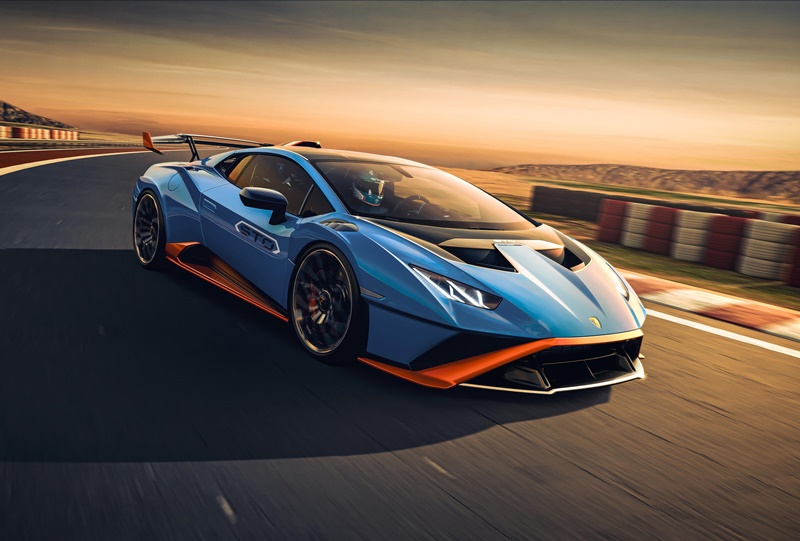
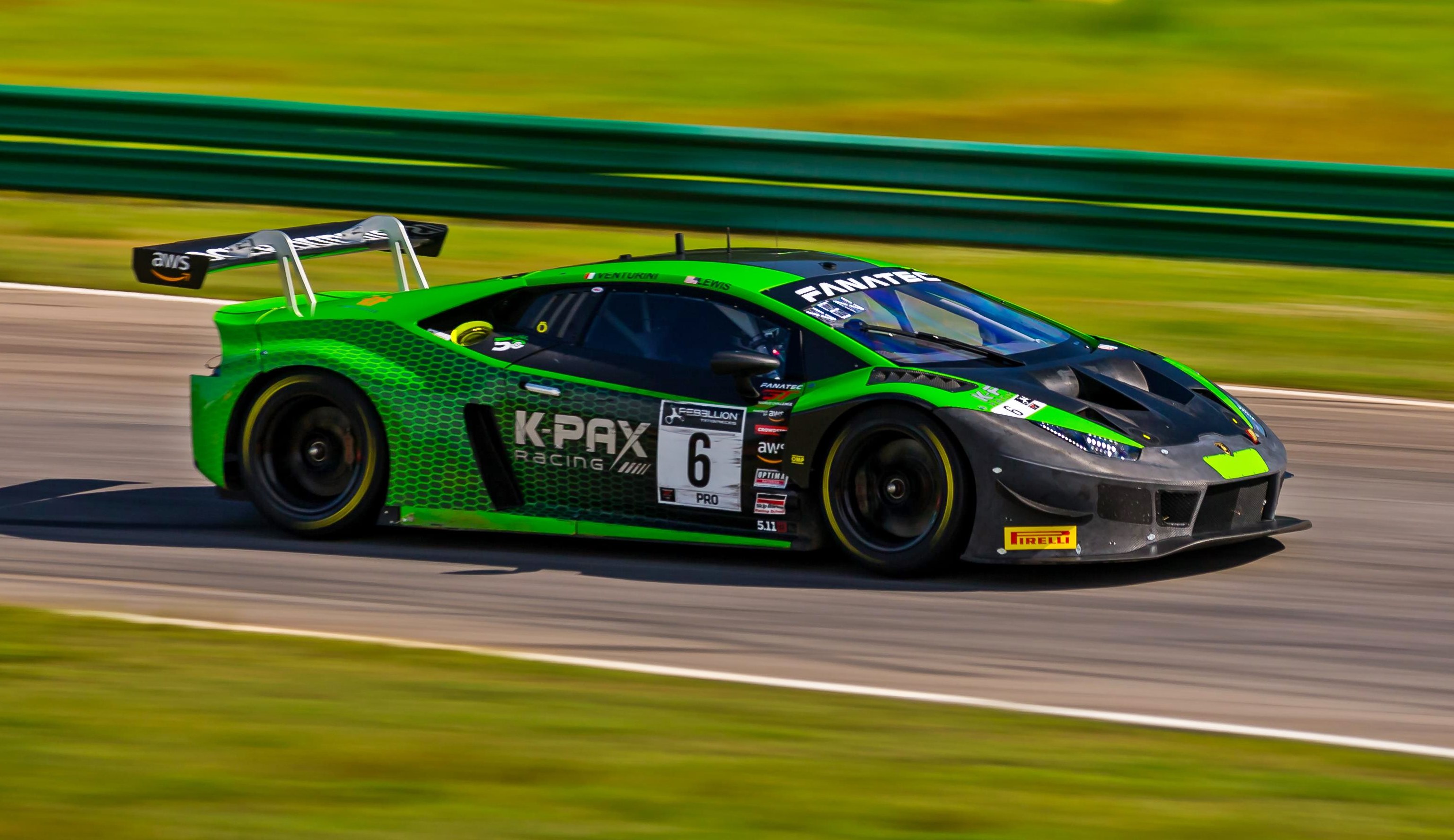
The two strong design elements – the hexagonal airscoop design and the rear fin – are derived from Huracan STO, contributing to a more efficient intake system and better car balance. The airscoop is connected to a snorkel, replacing the side air intakes, which optimally channels the airflow directly into the engine, resulting in greater responsiveness to the driver’s demands.
The introduction of 10 electronically actuated throttle bodies increases the efficiency of the V10 with titanium valves; the entire system, designed in-house by Lamborghini Squadra Corse, is fixed to the engine by just 4 screws, a solution introduced for the first time on the Essenza SCV12, to facilitate maintenance work.
The fully carbonfibre bodywork has a muscular design created in collaboration with Lamborghini’s Centro Stile. The new splitters, diffuser and underbody enhance aerodynamic efficiency. The carbonfibre floor, coated with high-strength Zylon fibre, together with the new diffuser, provides greater downforce than the current generation GT3 EVO.
Other innovations include the rear wing, which is mounted on aluminium alloy pillars inspired by those of the STO. The new supports allow for greater precision in adjusting the wing compared to those of the EVO model.
The redesigned roll cage, with the introduction of two rear pillars, and the new carbon-Kevlar honeycomb side panels, already tested on the Essenza SCV12, increases safety in the event of impact on the doors in compliance with the FIA 2022 regulations. The plexiglas side windows are now fixed to the carbonfibre door panel by means of a ring of screws for greater structural rigidity and reliability.
Stopping power has also been optimised as the brake system has been updated with new calipers and pads designed by Squadra Corse for both endurance and sprint races. These solutions, combined with dedicated traction control and ABS, have been developed to make the car easy to control in low-grip conditions. The car is delivered to customers equipped with PZero tyres (325/680-18 at the front; 325/705-18 at the rear) from Pirelli.
“The new Huracan GT3 EVO2 is not simply an evolution of the current car. It’s a new project that reinforces the technological transfer between Lamborghini’s motorsport division and the company and inherits two difficult tasks: to prove as successful as the previous generations of Huracan GT3, which have won more than 40 international titles in 6 seasons, and to match its commercial success by helping to reach the target of 500 Huracán racing cars since 2015,” said Giorgio Sanna, Lamborghini Head of Motorsport.
The first customers will get their cars from the second half of 2022, with the track debut to be at the 2023 Daytona 24 Hours. Those who are running the previous Huracan GT3 EVO model can upgrade it to the GT3 EVO2 specifications via an evolution kit.
Lamborghini Huracan deliveries pass 20,000 mark after 8 years
Wiesmann, a German carmaker founded by two brothers, has been in existence since 1988 although it may not be as well known as other specialist carmakers. Until it ran into financial problems and ceased operations in 2014, it had a steady business making and selling retro-styled sportscars with BMW M V8 and V10 engines.
It came out of dormancy in 2016 after being qcquired by Contex Global, a technology company, and has since been developing new models. One of them, codenamed ‘Project Thunderball’, is an electrically-powered convertible sportscar with rear-wheel drive. Development appears to have been completed and a fully engineered car built for preliminary presentation to the world.
With the promise of being ‘the world’s most exciting electric sports car’, the Thunderball (we don’t know if that will be its name in the market) has two electric motors at the rear end. These have a combined output of 494 kW (671 ps) and 1,100 Nm, which should take the 1,700-kg roadster from standstill to 100 km/h in a claimed 2.9 seconds.
The 83 kWh lithium-ion battery pack, which comes from another sportscar company, Roding Automobile, will have 800V technology and can be charged at levels of up to 300 kW. A 500-km range on a full charge is targeted.
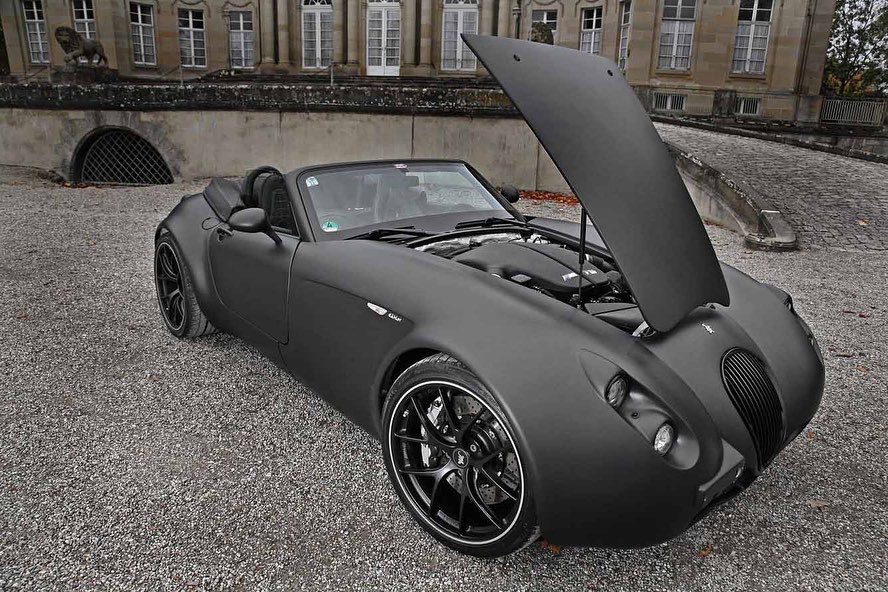
Having many years of experience developing sportscars, Wiesmann intends to maintain the driving dynamics that its customers have enjoyed in its combustion-engined models. One approach is the way it has programmed the regenerative braking system to give the sort of feel which has been lost in most electric vehicles today. The Thunderball’s system will have 5 levels of braking and stronger braking forces that drivers can manage when heading into turns.
The styling will still have some retro undertones although there are also elements of modernity which reflect the new era of powertrains (and also the company). Besides the signature grille shape that was last seen on the company’s MF5 model, the new car will also retain the long-nose profile reminiscent of British sportscars.
The interior, like the exterior, has a blend of retro and modern themes. Modern materials like carbonfibre will be used for the dashboard which will incorporate a large display screen and no less than 7 analogue meters. The sports seats will also have carbonfibre shells to keep weight low.
Wiesmann will build the Thunderball at its own factory in Germany and has indicated a starting price of €300,000 (about RM1.37 million).
Jaguar XK European by Thornley Kelham – an automotive icon reimagined
Following the presentation of the CURVV concept early in April, Tata Motors recently unveiled a second concept car which will be the basis of a new battery-electric vehicle (BEV) that will enter the market in 2025. The new concept car is called the AVINYA, the name being derived from the Sanskrit language to stand for ‘Innovation’.
“While making the AVINYA Concept a reality, the central idea was to offer a mobility solution like no other – a state of the art software on wheels that is well designed, sustainable and reduces the planet’s carbon footprint,” said N Chandrasekaran, Chairman, Tata Sons and Tata Motors. “Green Mobility is at the nucleus of Tata Passenger Electric Mobility (TPEM), and the AVINYA Concept is the perfect reflection of what the company stands for – a creation that will not only accelerate the adoption of EVs but also lead this movement.”
Expanding on Mr. Chandrasekaran’s statement, Shailesh Chandra, Managing Director, Tata Motors Passenger Vehicles Ltd., and Tata Passenger Electric Mobility Ltd., said: “It is indeed a matter of pride for us at TPEM to present the AVINYA Concept to the world, a vision pivotal in signalling a ‘New Paradigm’. Holding on to its values of Simplicity, Timelessness, Effortlessness and Grace, the AVINYA is not only a concept but is our new identity, an identity which is here to challenge the status quo. It gives me an intense sense of optimism to present a new typology of vehicles that will introduce the automobile industry to options beyond mobility – a tranquil space which will offer you a complete sensory experience while on the move.”
The AVINYA Concept is the first model built on the GEN 3 architecture developed for BEVs. This global platform offers high structural safety and has the next level of waterproofing and dust protection which may be a necessity in India and some other markets.
This architecture is built with the use of next-gen lightweight materials, efficient electronic componentry and proprietary energy management strategies and algorithms for efficiency management.
With this architecture, Tata Motors plans to produce a range of globally competitive EVs. These will have new age technology, software and Artificial Intelligence working in the background. To help in widening adoption of BEVs, Tata Motors aims to make the model fairly accessible to a majority of customers of fast-growing, high-volume segments of today.
The catamaran design served as inspiration for the AVINYA Concept, conceived as a premium hatchback with the versatility of an SUV and the roominess and functionality of an MPV. A significant highlight on the front and the rear of the vehicle is the new identity. Each side has ‘Butterfly’ doors, hinged at the front and at the rear. When both are open, a wide opening is available for entry and exit.
Such a concept is usually shown in concept cars but does not always continue in the production models. There are some models that do have it, like those from Rolls-Royce and as we have seen recently, the new Mazda MX-30.
The AVINYA Concept also has a skydome to further enhance the overall sense of space by letting in natural light from above. Sustainable materials are used, communicating the ethos of the product and as a finishing touch, there is an aroma diffuser.
Tata Motors’ designers have made an interesting departure from the trend of having more display screens (and larger ones too) around the cabin. They believe that less screen time is the way to go, and have minimised this aspect. This will eliminate distractions inside the car and create a stress-free environment for the mind and soul, they feel.
Tata Motors does not say much about the powertrain but intends to provide a battery pack with ultra fast-charge capability that will give a 500-km range in under 30 minutes. Other subsidiaries in the Tata Group will develop the batteries and EV technologies, giving the company an advantage in what will become a competitive segment of the global auto market.
Tata CURVV concept SUV previews next-generation electric model from carmaker
The championship lead in Season 8 of Formula E again changed after Round 6 as Mercedes-EQ Formula E Team’s Stoffel Vandoorne claimed victory in Monte Carlo. Running a tactical drive around the famous street circuit, he beat polesitter Mitch Evans (Jaguar TCS Racing) and DS TECHEETAH’s Jean-Eric Vergne.
Evans had been close to a win in Monaco last year, before DS TECHEETAH’s Antonio Felix da Costa snatched it from him seconds from the end. This year, he had been looking forward to finally scoring the win, but it was evident that he couldn’t quite capitalise on the searing pace that saw him fly to pole position. Anyway, 18 points and second spot after a Rome win-double sees the Jaguar driver’s hot-streak continue.
Having started fourth, Vandoorne managed to get to the front after then-leader Pascal Wehrlein (TAG Heuer Porsche Formula E Team) retired from the lead with technical issues on Lap 16. The disappointed Porsche team was uncertain why their car turned completely off and shut down on the downhill section out of Mirabeau.
With Wehrlein’s car recovered, the racing got back underway until shortly after, a collision with Mahindra Racing’s Oliver Rowland saw Andre Lotterer hit the wall into Sainte Devote (Turn 1), ending his race early. Having secured the lead, Vandoorne stayed in control to emerge in a strong position after a full course yellow and Safety Car. He made good on both restarts to take the chequered flag first with race pace and energy in-hand.
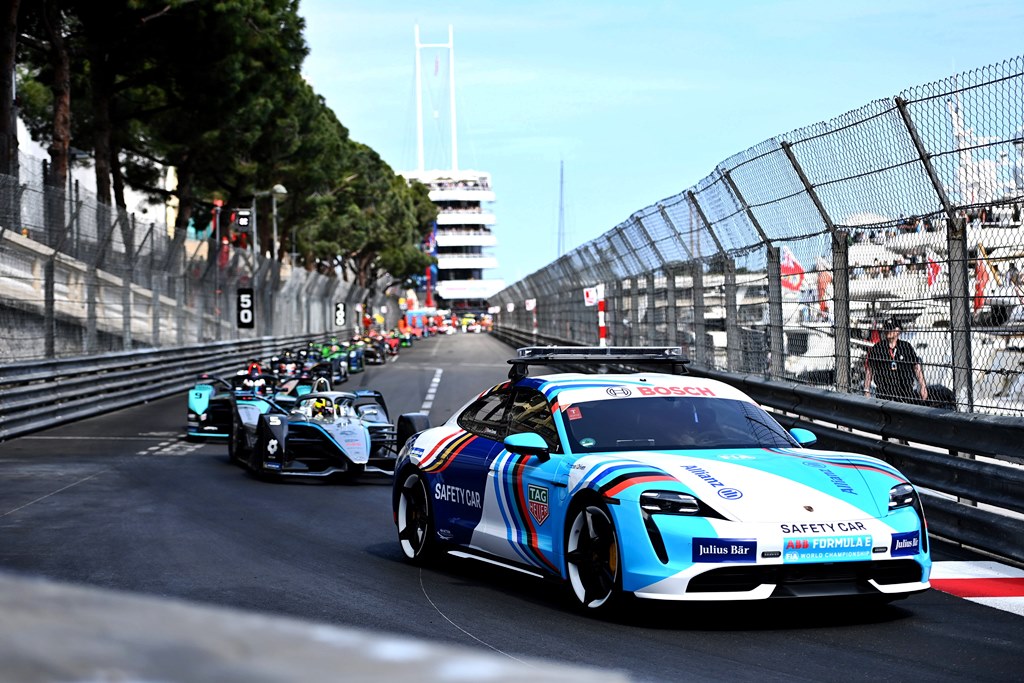
Vergne had sparred for the race distance with those ahead and fending off the late attentions of Envision Racing’s Robin Frijns who finished fourth, the Dutchman extending his consistent run of form. That made it a joint-high of three podiums for Vergne and he remains the only driver to score points in every race this season.
Antonio Felix da Costa made it two DS TECHEETAHs in the top five finishers, with Lucas di Grassi taking sixth for ROKiT Venturi Racing, Unfortunately, Edoardo Mortara retired late on having run much of the race alongside his teammate in the points.
The series will next be in Berlin for two rounds on May 14/15, at which time the championship will be at its halfway point. After Berlin will be a round in Indonesia, which will host a Formula E round for the first time at a purpose-built circuit in northern Jakarta.
Formula E Gen3 racing car unveiled, to be used from Season 9 in 2023
Season 9 of the ABB FIA Formula E World Championship, which will run in 2023, will see all-new racing cars being used in the fully electric single-seater series. Referred to as Gen3, signifying them as third generation designs, the cars are designed and optimised specifically for street racing.
Developed by engineers and sustainability experts at the FIA and Formula E, the Gen3 is intended to show the world that high performance and sustainability can co-exist without compromise. At the same time, cutting-edge technologies (especially for electric vehicles), that are developed for the racing cars will eventually transfer to road-going production models.
While aerodynamic development programs have been central to driving incremental improvement in motorsport for decades, the Gen3 propels software engineering forwards as a new battleground for motorsport innovation and competition. Performance upgrades to the Gen3 will be delivered as software updates directly to the advanced operating system built into each car.
With a disruptive design inspired by the aerodynamic form of a fighter jet, this will be the fastest Formula E car yet, capable of over 322 km/h. Yet it will also be the most efficient formula racing car ever: more than 40% of the energy used within a race will be produced by regenerative braking. The powerful electric motors will have around 95% power efficiency as it generates up to 350 kW (equivalent to 470 ps), compared to approximately 40% for an internal combustion engine.
This will also be the first-ever formula car with both front and rear powertrains. A new front powertrain adds 250 kW to the 350kW at the rear, more than doubling the regenerative capability of the current Gen2 to a total of 600 kW. There is ultra-high speed charging capability of 600 kW for additional energy during a race, almost double the power of the most advanced commercial chargers in the world. There will be no rear hydraulic brakes with the addition of the front powertrain and its regenerative capability.
Linen and recycled carbonfibre will be used in bodywork construction for the first time in a formula car featuring recycled carbonfibre from retired Gen2 cars and reducing the overall amount of virgin carbonfibre used. This will reduce the carbon footprint of the production of the Gen3 bodywork more than 10%. All waste carbonfibre will be reused for new applications through adoption of an innovative process from the aviation industry.
Natural rubber and recycled fibres will make up 26% of new Gen3 tyres and all tyres will be fully recycled after racing. Only sustainably-sourced minerals will be used and battery cells will be reused and recycled at end of life.
The carbon footprint of the Gen3 has been measured from the design phase to inform all reduction measures taken to reduce environmental impact, while all unavoidable emissions will be offset as part of Formula E’s net zero carbon commitment.
Seven automakers have registered with the FIA to race the new Gen3 in Season 9. They are DS Automobiles, Jaguar, Mahindra, Maserati, NIO, Nissan and Porsche.
“Both technologically and environmentally, Gen3 sets new standards in the sport. The FIA and Formula E development teams have done a superb job, and I thank them for their hard work on this project. I am delighted to see so many leading manufacturers already signed up to the championship’s next era and await Gen3’s competitive debut in Season 9 with great anticipation,” said Mohammed Ben Sulayem, President of the FIA.
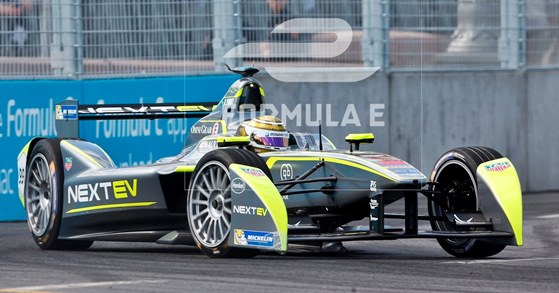
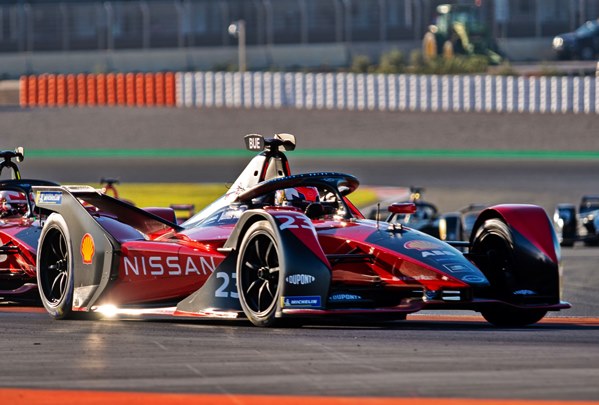
© Copyright – Piston.my 2024 Trademarks belong to their respective owners. All rights reserved